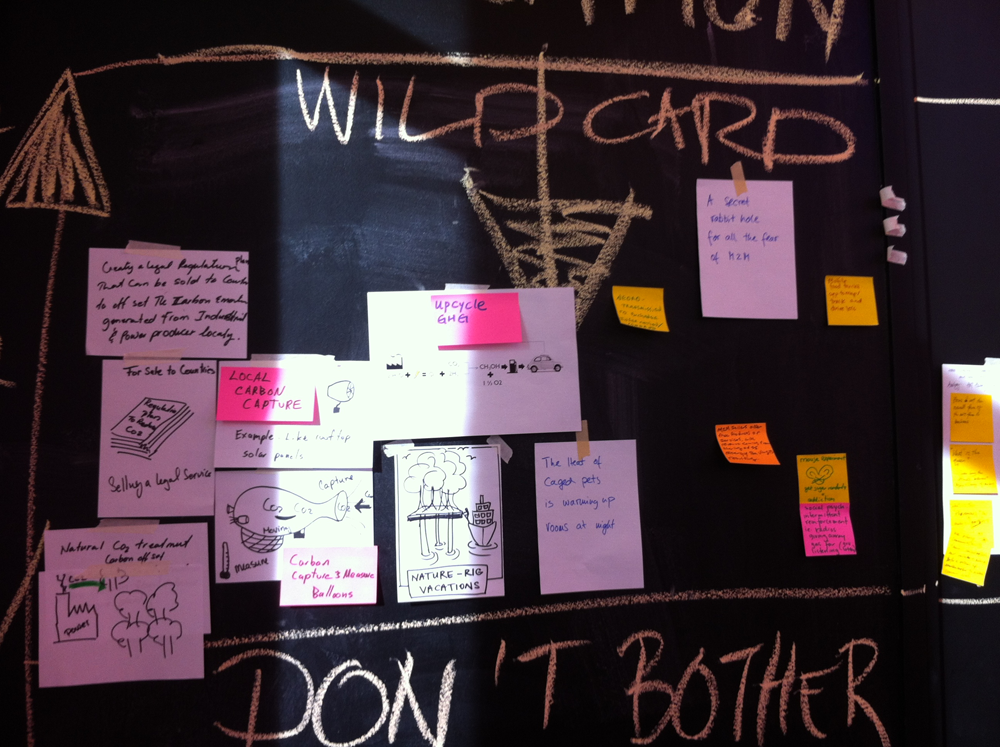What strikes me about a recent Huffington Post article "Food Insecurity, Food Security" by Christina Weiss Lurie and Joan C. Hendricks is that, in raising the specter of the growing health problems stemming from food deserts, they highlighted the role veterinarians can play. This is not a common angle in the discussion of why both obesity and malnutrition are on the rise in the United States. But it is a perfect example of why complexity theory is so important here at Curious Catalyst when we consider urban challenges.
Take a look at the map below, which shows one of the reasons South Central Los Angeles is often called a food desert - an area commonly recognized for having no fresh produce available within a mile radius and populated by citizens with limited access to transportation. Based on this data, you might be tempted to think that the best way to address this challenge is to attack access head-on. You'd be wrong.
Complexity theory is the science of system dynamics in all their glory, taking into account actors (people!) and the factors which influence the way they behave and, thus, shape the system itself. It integrates ideas pulled from chaos theory, cognitive psychology, computer science, and evolutionary biology, among other sources of inspiration, to address systems as they are. This means that complexity science acknowledges that complex behavior emerges from a few simple rules, and that all complex systems are networks of many interdependent parts which interact according to those rules. These systems underlie the most persistent of problems we face in cities today, and food deserts are a worthy subject for examination.
The first step in orienting around a solution space is to ruthlessly identify the myriad contributing factors. As we began looking in our own backyard in Los Angeles, talking with people from those who work in urban farms in housing projects to those who've tried for years to tackle various aspects of this epidemic, it became clear that the human factors are more important than the infrastructure - though addressing both will be critical for any kind of long-lasting progress.
These are just a few of the considerations around why eating habits have developed in food deserts as we see them today.
The Huffington Post article highlights why food security is such a pressing concern, "with 17 million children food insecure, the chronic health consequences requiring long-term health care are enormous. The cost of this threat to the US economy in terms of healthcare is a staggering $167 billion a year. So what can we do as a nation? Who can we turn to for help?" The authors raise a rallying cry around the quality factor by exploring the role of veterinary medicine in the food chain.
"Veterinary medicine is the profession that is intimately tied to food safety and production. Veterinarians help ensure egg, cattle, swine, and poultry safety, including the spread of infectious diseases in animals. They also provide guidance to farmers on modern farming production like the herd health program which checks the efficiency of milking machines, as well as waste management, reproductive efficiency, and immunization programs. Access to protein-rich foods is crucial because a lack of milk, meat and eggs can lead to malnourishment. Vets can have a direct and positive effect on malnourishment."
We couldn't agree more. But from our human-centered design perspective, this is not a high-leverage point for turning food deserts around. Our exploration of one idea in this solution space, using re-imagined food trucks to combine increased access to both fresh produce and healthier prepared foods, is an example of how a complexity frame can address more of the elements playing into the simple rules keeping food deserts a persistent urban challenge.
Very few people get excited about tackling complex problems or using complexity theory to see them in new light (though we know a few from our involvement at THNK), but we believe it makes all the difference. If you're interested in rolling up your sleeves with us, please get in touch. We always have time for a chat about complex systems provided coffee is within reach...





